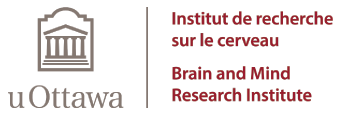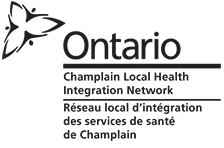
Case
J. is a 17-yo male 17 year-old teen who normally lives with parents. Father recently deployed and will be away for 6-months. Always a worrier. Now episodes of breathing, shaking, palpitations, and sweating Starting to avoid school, due to worry about having future episodes at school
How are you going to help J.?
Anxiety During the Lifespan
Having just enough fears and worries is normal and protective, as it helps little humans avoid dangers. However, when these fears and worries become excessive to the point where they cause problem, it is known as "anxiety".
|
Age |
Typical triggers for fears, worries and anxiety |
|
Infants |
Sensory triggers, such as loud noises; being dropped Separation from caregivers |
|
Toddlers |
Separation anxiety Phobias (e.g. fears of insects, storms, the dark, monsters), as toddlers are starting to explore the world around them |
|
Preschoolers (age 3-5) |
Safety fears Mastery fears |
|
School-age (age 6-12) |
Performance and competency worries; social worries about rejection; worries about becoming ill |
|
Adolescents (age 12-18) |
Social competence and evaluation by others ; main worries are now social rather than physical. |
Epidemiology
Anxiety disorders are the most common mental health conditions affecting children and youth with a point prevalence of 6%.
Presentation
Signs/Symptoms
- Thoughts: Worry thoughts
- Feelings: Anxiety and worry
- Behaviours: Avoidance of anxiety-provoking situations
- Physical: Troubles with sleep, appetite, energy due to prolonged autonomic arousal
Screening and Diagnostic Tools
-
GAD-2
Permission To Use Copyright, but free to use Download Link http://integrationacademy.ahrq.gov/sites/default/files/GAD-2_0.pdf Alternate Link Conditions Addressed Generalized Anxiety, Panic Disorder Ages Served 16 years and up Complete this survey on eMentalHealth.ca
-
GAD-7 (Generalized Anxiety Disorder - 7 item)
Permission To Use Public Domain Download Link http://www.integration.samhsa.gov/clinical-practice/GAD708.19.08Cartwright.pdf Alternate Link Conditions Addressed Generalized Anxiety Disorder; Anxiety Disorder Ages Served 18 years and up Website http://www.ncbi.nlm.nih.gov/pubmed/16717... Complete this survey on eMentalHealth.ca
-
Kutcher Generalized Social Anxiety Scale For Adolescents (K-GSADS-A)
Permission To Use Public Domain Produced By Dalhousie University Conditions Addressed Social Anxiety Disorder Ages Served 12 - 20 years Website http://teenmentalhealth.org/for-health-p...
-
Self-Report for Childhood Anxiety Related Disorders (SCARED), 41-item
Permission To Use Public Domain Ages Served 8 - 17 years Website http://www.wpic.pitt.edu/research
-
Self-Report for Childhood Anxiety Related Disorders (SCARED), 5-item
Permission To Use Copyright, but free to use Produced By Dr. Boris Birmaher Conditions Addressed Anxiety Ages Served 8 - 17 years Complete this survey on eMentalHealth.ca
-
Spence Children's Anxiety Scale (SCAS)
Permission To Use Copyright, but free to use Ages Served 2 - 12 years Website http://www2.psy.uq.edu.au/~sues/scas/
History / Assessment
Who to ask?
- With younger children, most questions will be directed primarily towards the parents
- With youth and older children, most questions can be directed at parents and the youth
General screen
- Physician (to parent): “Does your child tend to be a worrier, or an anxious or nervous person?”
- Physician (to child/youth): “Do you tend to be an anxious or nervous person?”
- If patient answers positive, then screen for other anxiety conditions such as obsessive-compulsive disorder, phobias and panic disorder.
- Stresses
- What stresses are you under these days?
Differential Diagnosis / Comorbidity
There are various conditions that can mimic anxiety, or that may be comorbid with anxiety:
|
Is there, or are there... |
Consider… |
|
Anxiety due to General Medical Condition
|
|
Adjustment Disorder with Anxiety
|
|
Simple Phobia
|
|
Separation Anxiety Disorder
|
|
Social Anxiety Disorder
|
|
Generalized Anxiety Disorder (GAD)
|
|
Obsessive Compulsive Disorder (OCD)
|
|
Panic Attack
|
|
Panic Disorder
|
|
Anxiety Disorder Not Otherwise Specified (Anxiety Disorder NOS)
|
| People with ADHD may have restlessness from hyperactivity, anxiety from constantly not meeting expectations, or have negative reactions from others. |
| People with psychosis may feel unsafe and hence anxious. |
| Autism spectrum disorder (ASD)
|
| People with sensory processing issues may have anxiety from sensory stresses, including sensory overload.
|
| Substance use may cause anxiety; withdrawal of substances may also cause anxiety.
|
Differential Diagnosis: Physical Conditions
Rule out physical conditions that might be causing anxiety, or contributing to anxiety:
|
Endocrine |
Thyroid problems such as hyperthyroidism |
|
Diet / Toxins |
Caffeine from energy drinks, soft drinks Heavy metal (including lead poisoning) |
|
Neurologic |
Migraines Pain Tumors, delirium (rare) |
| Cardiovascular | Syncope Cardiac arrthymias Postural orthostatic tachycardia syndrome (POTS) |
|
Respiratory |
Asthma |
| Endocrine | Hypoglycemia Phaeochromocytoma (rare) |
|
Medication-induced |
Steroid use (adrenal or glucocorticosteroids) ADHD medications |
Physical Exam (Px)
There is no diagnostic physical exam for anxiety conditions. Physical exam is important to help rule out contributory medical conditions, and can also show signs consistent with anxiety conditions.
|
General |
Signs of sympathetic nervous system (SNS) activation may be seen, e.g. elevated HR, blood pressure, rapid breathing, sweaty palms, restlessness, pacing. |
|
Head |
Loss of hair on the head, or eyebrows may indicate hair pulling (trichotillomania) |
|
Skin |
Excoriations from compulsive skin picking (excoriation disorder) Signs of excessive hand washing (obsessive compulsive disorder) |
Investigations
| Investigation | What it might possibly indicate |
| Postural vitals | Postural changes may indicate postural orthostatic tachycardia syndrome (POTS), i.e. increased HR of 30 or more when going from sitting to standing position |
|
CBC, differential |
Anemia; WBC elevation with infection |
|
Monospot |
Infectious mononucleosis |
|
TSH |
Thyroid problems |
|
Liver tests, electronlytes, renal function tests |
Chronic illness |
|
Pregnancy test |
Pregnancy |
|
B12, folate, vitamin D |
Nutritional deficiencies |
Management in Primary Care
- Educate family about anxiety
- Teach parents how to respond and support their child with anxiety and worries.
- Is the child emotionally upset?
- When people see their loved ones upset, many times they try to problem-solve ("tell me what's going on?") or giving advice (e.g. "let's try some deep breathing."
- The problem however, is that when people are emotional, they may not be able to access their "rational mind" or "logical mind".
- Recommendation
- Start with acceptance and validation: "You seem really anxious! I'm here. I'm with you. Let me sit with you. How can I help?"
- Is the child in the red zone? (i.e. "fight / flight / freeze")
- In the red zone, even listening and empathy may not be enough.
- Recommendation
- Give the person space and time for the anxiety to pass, ideally using whatever plan was discussed at a previous time when they were calmer.
- Don't cause added stress to their overwhelmed brain by trying to problem-solve, give advice, etc.
- Is the child in the green zone? (i.e. calm, logical, relaxed).
- When a child is not acutely upset, this is when parents can talk to them about problem-solving, or strategies to address the worries.
- Is the child emotionally upset?
- Lifestyle interventions
- Do parents have issues with their own anxiety?
- Refer parents to mental health services
- Refer parents to mental health services
- Counseling/therapy for the child/youth such as:
Is there severe anxiety, or anxiety that does not respond to non-medication strategies? If so, then consider medications.
Connecting with the School
Ask the parents if the school is aware that the student struggles with anxiety, as 1) school can be a source of anxiety, and 2) school can be a support. Sometimes they are not even aware. The school can come up with plan to help 1) reduce any school sources of stresses/anxiety, and 2) provide additional supports for the student.
In some cases, it may be helpful that the healthcare provider contact the school. This can be done during a phone call during an office visit.
School letters
It can be helpful to write a letter to document the issues with anxiety. Examples are below:
Medication Management in Primary Care
Is there moderate to severe anxiety that has not responded to non-medication approaches? If so, then consider medication (Kodish, 2011; CANMAT, 2016)
- Sertraline
- Fluvoxamine
- Fluoxetine
- Choose an alternate SSRI that has not already been tried
- Venlafaxine (XR) (shown helpful in GAD trial)
Medication Dosage Table for Anxiety in Children/Adolescents
| Medication | Dosage |
| Sertraline (Zoloft) |
Age 6-12: Start 25 mg daily x 1 week; then 50 mg daily; max dosage 100 mg
Age 13-17: Start 50 mg daily x 1-week, then increase by 50 mg weekly; max 200 mg daily
|
| Fluoxetine (Prozac) |
Age 6-12: Start 5 mg daily as liquid, or 10 mg capsule alternating days; max 20 mg daily.
Age 12-18: Start 10 mg daily; increase up to 60 mg (for OCD).
|
| Fluvoxamine (Luvox) |
Age 6-12: Start 25 mg daily; target therapeutic range 50-200 mg daily in children; max 200 mg daily.
Age 12-18: Start 25-50 mg daily; target range 50-300 mg daily in adolescents; max
|
| Venlafaxine XR (Effexor | Age 6-12: Start 37.5 mg daily, then increase to 75 mg daily x 1-week, up to max 150 mg daily. Age 12-18: : Start 37.5-75 mg daily, then increase to 37.5-75 mg daily x 1-week, up to 75-225 mg daily; max 375 mg daily. |
| Desvenlafaxine (Pristiq) | Age 12+: Start 50 mg daily, initial target 50 mg daily; max 100 mg daily |
| Duloxetine (Cymbalta) | Age 6-12: Start 30 mg, initial target 60 mg, max 60 mg Age 12+: Start 30 mg, initial target 60, max 120 mg |
* Disclaimer: This medication table is a rough summary only and is not a replacement for clinical judgment and consulting a drug reference such as PDR or Lexi-Comps.
Complementary and Alternative Treatments
- Yoga
- Kava kava: No paediatric studies; Rare cases of hepatotoxicity due to contamination by Aspergillus toxins
- GABA; No paediatric studies.
- Cycloserine: No effects in children/youth (Cochrane Review)
When to Refer to Mental Health Professionals
- When the anxiety is not improving despite initial course of medication / non-medication treatment
Who to Refer to
- Mental health clinics in hospitals or community mental health agencies
-
Private practice professionals
- Psychiatrists
- Psychologists
- Certified clinical counselors (CCC)
Clinical Guidelines
Practice Parameter for the Assessment and Treatment of Children and Adolescents With Anxiety Disorders, J. Am. Acad. Child Adolesc. Psychiatry, 2007;46(2):267-283.
Anxiety and depression in children and youth – diagnosis and treatment from the Guidelines and Protocols Advisory Committee (British Columbia) http://www.bcguidelines.ca/gpac/pdf/depressyouth.pdf
Readings for Primary Care
Carlatt J: The Psychiatric Review of Symptoms: A Screening Tool for Family Physicians, Am Fam Physician. 1998 Nov 1;58(7): 1617-1624. Retrieved Sep 9, 2012 from http://www.aafp.org/afp/1998/1101/p1617.html
About this Document
Written by members of the eMentalHealth.ca/PrimaryCare team which includes members of the Department of Psychiatry and Family Medicine at the University of Ottawa. Reviewed by members of the Family Medicine Program at the University of Ottawa, including Dr's Farad Motamedi; Mireille St-Jean; Eric Wooltorton.
Disclaimer
Information in this pamphlet is offered ‘as is' and is meant only to provide general information that supplements, but does not replace the information from a qualified expert or health professional. Always contact a qualified expert or health professional for further information in your specific situation or circumstance.
Creative Commons License
You are free to copy and distribute this material in its entirety as long as 1) this material is not used in any way that suggests we endorse you or your use of the material, 2) this material is not used for commercial purposes (non-commercial), 3) this material is not altered in any way (no derivative works). View full license at http://creativecommons.org/licenses/by-nc-nd/2.5/ca/
























